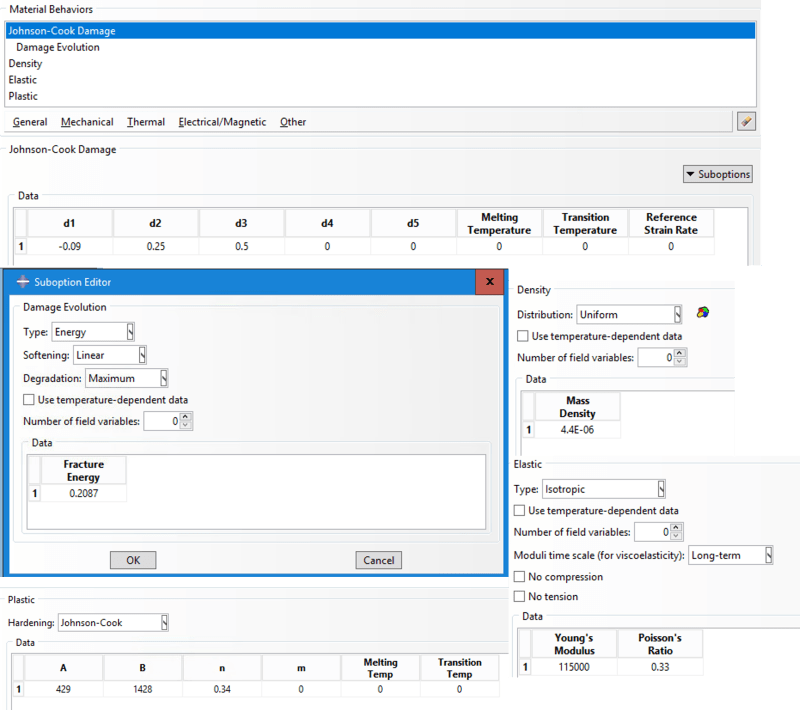DavidMcArthur
Mechanical
Hi all,
I have set up a model of a cellular material modelled using B31 beam elements compressed by hard contact (penalty friction=0.3) defined with 2 analytical rigid surfaces. The material model I have proposed is taken from literature and includes: Elasticity, density, Johnson-Cook plastic hardening, Johnson-Cook damage and linear damage evolution with fracture energy criteria (screenshots attached). I have requested JCCRT, SDEG and STATUS in field outputs (I have applied antialiasing but this shouldn't affect results significantly it just removes noise.
In my results, JCCRT has a maximum value of ~19,000 (screenshots attached) - since I have introduced damage evolution, I don't understand why JCCRT is so high as it should reach a maximum of 1. I have attached the .cae file for consideration.


I have set up a model of a cellular material modelled using B31 beam elements compressed by hard contact (penalty friction=0.3) defined with 2 analytical rigid surfaces. The material model I have proposed is taken from literature and includes: Elasticity, density, Johnson-Cook plastic hardening, Johnson-Cook damage and linear damage evolution with fracture energy criteria (screenshots attached). I have requested JCCRT, SDEG and STATUS in field outputs (I have applied antialiasing but this shouldn't affect results significantly it just removes noise.
In my results, JCCRT has a maximum value of ~19,000 (screenshots attached) - since I have introduced damage evolution, I don't understand why JCCRT is so high as it should reach a maximum of 1. I have attached the .cae file for consideration.


